 W
WMilk is a nutrient-rich liquid food produced by the mammary glands of mammals. It is the primary source of nutrition for young mammals, including breastfed human infants before they are able to digest solid food. Early-lactation milk is called colostrum, which contains antibodies that strengthen the immune system and thus reduces the risk of many diseases. It holds many other nutrients, including protein and lactose. Interspecies consumption of milk is not uncommon, particularly among humans, many of whom consume the milk of other mammals.
 W
WThe 2008 Chinese milk scandal was a significant food safety incident in China. The scandal involved milk and infant formula along with other food materials and components being adulterated with melamine. The chemical was used to increase the nitrogen content of diluted milk, giving it the appearance of higher protein content in order to pass quality control testing. Of an estimated 300,000 victims, 6 babies died from kidney stones and other kidney damage and an estimated 54,000 babies were hospitalized.
 W
WA2 milk is a variety of cows' milk that mostly lacks a form of β-casein proteins called A1, and instead has mostly the A2 form. Cows' milk like this was brought to market by The a2 Milk Company and is sold mostly in Australia, New Zealand, China, the United States, and the United Kingdom. Non-cow milk, including that of humans, sheep, goats, donkeys, yaks, camels, buffalo, and others, also contain mostly A2 β-casein, and so the term "A2 milk" is also used in that context.
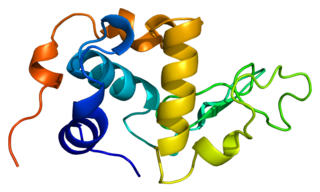 W
WLactalbumin, alpha-, also known as LALBA, is a protein that in humans is encoded by the LALBA gene.
 W
WAutomatic milking is the milking of dairy animals, especially of dairy cattle, without human labour. Automatic milking systems (AMS), also called voluntary milking systems (VMS), were developed in the late 20th century. They have been commercially available since the early 1990s. The core of such systems that allows complete automation of the milking process is a type of agricultural robot. Automated milking is therefore also called robotic milking. Common systems rely on the use of computers and special herd management software. Also it used to monitor the health status of cows.
 W
WThe Babcock test is an inexpensive and practical procedure to determine the fat content of milk. It is named after its developer, Stephen M. Babcock (1843–1931), professor at the University of Wisconsin.
 W
Wβ-Lactoglobulin (BLG) is the major whey protein of cow and sheep's milk, and is also present in many other mammalian species; a notable exception being humans. Its structure, properties and biological role have been reviewed many times.
 W
WBile salt-dependent lipase, also known as carboxyl ester lipase is an enzyme produced by the adult pancreas and aids in the digestion of fats. Bile salt-stimulated lipase is an equivalent enzyme found within breast milk. BSDL has been found in the pancreatic secretions of all species in which it has been looked for. BSSL, originally discovered in the milk of humans and various other primates, has since been found in the milk of many animals including dogs, cats, rats, and rabbits.
 W
WA breast pump is a mechanical device that lactating women use to extract milk from their breasts. They may be manual devices powered by hand or foot movements or automatic devices powered by electricity.
 W
WChalav Yisrael, common Ashkenazi pronunciation Cholov Yisroel, is a Halachic term which refers to all dairy products, including cheese and non-fat dry milk powder, which derive from milk that has been milked under the supervision of a religiously observant Jew.
 W
WColostrum is the first form of milk produced by the mammary glands of mammals immediately following delivery of the newborn. Most species will begin to generate colostrum just prior to giving birth. Colostrum has especially high amounts of bioactive compounds compared to mature milk to give the newborn the best possible start to life. Specifically, colostrum contains antibodies to protect the newborn against disease and infection, and immune and growth factors and other bioactives that help to activate a newborn’s immune system, jumpstart gut function, and seed a healthy gut microbiome in the first few days of life. The bioactives found in colostrum are essential for a newborn’s health, growth and vitality.
 W
WCow blowing, Kuhblasen, phooka, or doom dev, is a process used in many countries according to ethnographers, in which forceful blowing of air into a cow's vagina is applied to induce her to produce more milk.
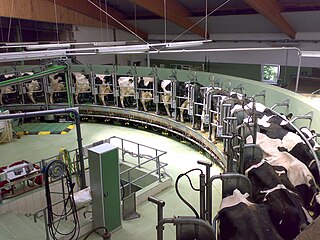 W
WDairy farming is a class of agriculture for long-term production of milk, which is processed for eventual sale of a dairy product.
 W
WA dry cow refers to a dairy cow that is in a stage of their lactation cycle where milk production ceases prior to calving. This part of their lactation cycle is referred to as the cows dry period and typically last between 40 and 65 days. Dry cows are typically divided into two groups: far-off and close-up. Once the cow has entered this stage, producers will seal the cows teat while following a veterinarian recommended, dry cow therapy for their herd. This dry period is a critical part of their lactation cycle and is important for the cows health, the newborn calf and future milk production as it allows the cow time to rest, eat and prepare for birth. During this time the cow will produce colostrum for the newly born calf.
 W
WThe Education Act 1944 made major changes in the provision and governance of secondary schools in England and Wales. It is also known as the "Butler Act" after the President of the Board of Education, R. A. Butler. Historians consider it a "triumph for progressive reform," and it became a core element of the post-war consensus supported by all major parties. The Act was repealed in steps with the last parts repealed in 1996.
 W
WThe fat content of milk is the proportion of milk, by weight, made up by butterfat. The fat content, particularly of cow's milk, is modified to make a variety of products. The fat content of milk is usually stated on the container, and the color of the label or milk bottle top varied to enable quick recognition.
 W
WFermented milk products or fermented dairy products, also known as cultured dairy foods, cultured dairy products, or cultured milk products, are dairy foods that have been fermented with lactic acid bacteria such as Lactobacillus, Lactococcus, and Leuconostoc. The fermentation process increases the shelf life of the product while enhancing its taste and improving the digestibility of its milk. There is evidence that fermented milk products have been produced since around 10,000 BC. A range of different Lactobacilli strains has been grown in laboratories allowing for many cultured milk products with different flavors and characteristics.
 W
WIce milk, or iced milk, is a frozen dessert with less than 10 percent milk fat and the same sweetener content as ice cream. Ice milk is sometimes priced lower than ice cream.
 W
WInfant formula, baby formula or just formula or baby milk, infant milk or first milk, is a manufactured food designed and marketed for feeding to babies and infants under 12 months of age, usually prepared for bottle-feeding or cup-feeding from powder or liquid. The U.S. Federal Food, Drug, and Cosmetic Act (FFDCA) defines infant formula as "a food which purports to be or is represented for special dietary use solely as a food for infants by reason of its simulation of human milk or its suitability as a complete or partial substitute for human milk".
 W
WLactation describes the secretion of milk from the mammary glands and the period of time that a mother lactates to feed her young. The process naturally occurs with all post-pregnancy female mammals, although it predates mammals. In humans the process of feeding milk is also called breastfeeding or nursing. Newborn infants often produce some milk from their own breast tissue, known colloquially as witch's milk.
 W
WLactose intolerance is a decreased ability to digest lactose, a sugar found in dairy products. Those affected vary in the amount of lactose they can tolerate before symptoms develop. Symptoms may include abdominal pain, bloating, diarrhea, gas, and nausea. These symptoms typically start thirty minutes to two hours after eating or drinking milk-based food. Their severity typically depends on the amount a person eats or drinks. Lactose intolerance does not cause damage to the gastrointestinal tract.
 W
WLongevity Brand is a brand of canned condensed milk, registered by Friesland Campina and distributed by Sun Hing Foods, Inc. in the United States and Canada. It is a popular ingredient in Vietnamese iced coffee with milk drinks, and in various other Vietnamese desserts.
 W
WMicrofoam is finely textured milk used for making espresso-based coffee drinks, particularly those with latte art. It is typically made with the steam wand of an espresso machine, which pumps steam into a pitcher of milk.
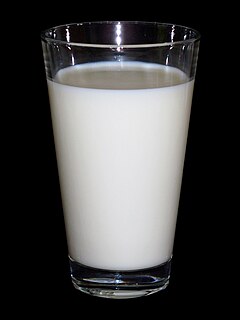 W
WMilk allergy is an adverse immune reaction to one or more proteins in cow's milk. When allergy symptoms occur, they can occur rapidly or have a gradual onset. The former may include anaphylaxis, a potentially life-threatening condition which requires treatment with epinephrine among other measures. The latter can take hours to days to appear, with symptoms including atopic dermatitis, inflammation of the esophagus, enteropathy involving the small intestine and proctocolitis involving the rectum and colon.
 W
WA milk churn is a tall, conical or cylindrical container for the transportation of milk. It is sometimes referred to as a milk can.
 W
WA milk churn stand was a standard-height platform on which milk churns would be placed for collection by cart or lorry. Some were simple and made of wood, but the majority were built from stone or concrete blocks. They were once a common roadside sight in Britain in areas which carried out dairy farming, but collection of milk churns from stands ceased in Britain in 1979. Many have survived, some being renovated to memorialise the practice, while others have been dismantled or left to decay.
 W
WMilk paint is a nontoxic water-based paint. It can be made from milk and lime, generally with pigments added for color. In other recipes, borax is mixed with milk's casein protein in order to activate the casein and as a preservative.
 W
WA milk watcher, milk saver, pot watcher, pot minder, milk guard, or boil over preventer is a cooking utensil placed at the bottom of a pot to prevent the foaming boil-over of liquids by collecting small bubbles of steam into one large bubble.
 W
WOrganic milk refers to a number of milk products from livestock raised according to organic farming methods. In most jurisdictions, use of the term "organic" or equivalents like "bio" or "eco", on any product is regulated by food authorities. In general these regulations stipulate that livestock must be: allowed to graze, be fed an organically certified fodder or compound feed, not be treated with most drugs, and in general must be treated humanely.
 W
WMilking is the act of removing milk from the mammary glands of cattle, water buffalo, humans, goats, sheep, and, more rarely, camels, horses and donkeys. Milking may be done by hand or by machine, and requires the animal to be currently or recently pregnant. The milker may refer either to the animal that produces the milk or the person who milks said animal.
 W
WOsteoblast milk protein is the name used by Mengniu, a Chinese dairy company, for a milk protein used as a food additive in their Milk Deluxe since 2005. It is supposed to help the absorption of calcium and promote bone growth in the osteoblasts and prevent osteoporosis.
 W
WPasteurization or pasteurisation is a process in which packaged and non-packaged foods are treated with mild heat, usually to less than 100 °C (212 °F), to eliminate pathogens and extend shelf life. The process is intended to destroy or deactivate organisms and enzymes that contribute to spoilage or risk of disease, including vegetative bacteria, but not bacterial spores. Since pasteurization is not sterilization, and does not kill spores, a second "double" pasteurization will extend the quality by killing spores that have germinated.
 W
WPowdered milk or dried milk is a manufactured dairy product made by evaporating milk to dryness. One purpose of drying milk is to preserve it; milk powder has a far longer shelf life than liquid milk and does not need to be refrigerated, due to its low moisture content. Another purpose is to reduce its bulk for economy of transportation. Powdered milk and dairy products include such items as dry whole milk, nonfat (skimmed) dry milk, dry buttermilk, dry whey products and dry dairy blends. Many exported dairy products conform to standards laid out in Codex Alimentarius. Many forms of milk powder are traded on exchanges.
 W
WRaw milk or unpasteurized milk is milk that has not been pasteurized, a process of heating liquid foods to kill pathogens for safe consumption and extending the shelf life. Proponents of raw milk have stated that there are benefits to its consumption, including better flavor, better nutrition, and the building of a healthy immune system. However, the medical community has warned of the dangers, which include a risk of infection, and has not found any clear benefit.
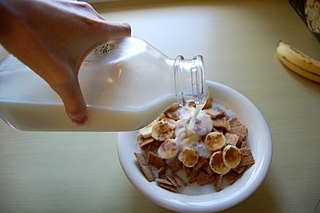 W
WSkimmed milk, or skim milk, is made when all the milkfat is removed from whole milk. It tends to contain around 0.1% fat.
 W
WA cappuccino is an espresso-based coffee drink that originated in Italy, and is traditionally prepared with steamed milk foam (microfoam).
 W
WAlmond milk is a plant milk manufactured from almonds with a creamy texture and nutty flavor, although some types or brands are flavored in imitation of dairy milk. It does not contain cholesterol, saturated fat or lactose, and is often consumed by those who are lactose-intolerant and others, such as vegans, who avoid dairy product. Commercial almond milk comes in sweetened, unsweetened, vanilla and chocolate flavors, and is usually fortified with micronutrients. It can also be made at home using a blender, almonds and water.
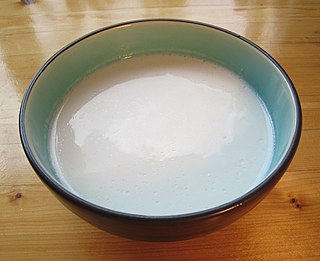 W
WCoconut milk is an opaque, milky-white liquid extracted from the grated pulp of mature coconuts. The opacity and rich taste of coconut milk are due to its high oil content, most of which is saturated fat. Coconut milk is a traditional food ingredient used in Southeast Asia, Oceania, South Asia, and East Africa. It is also used for cooking in the Caribbean, tropical Latin America, and West Africa, where coconuts were introduced during the colonial era.
 W
WHemp milk, or hemp seed milk, is a plant milk made from hemp seeds that are soaked and ground in water. The result resembles milk in colour, texture, and flavour. Hemp is conducive to being organically grown and labelled. Plain hemp milk may be additionally sweetened or flavoured.
 W
WA milk substitute is one term used to describe plant milk in relation to mammalian milk. Other terms include non-dairy beverage, nut milk, and alternative milk.
 W
WOat milk is a plant milk derived from whole oat grains by extracting the plant material with water. Oat milk has a creamy texture and oatmeal-like flavor, and is manufactured in various flavors, such as sweetened, unsweetened, vanilla or chocolate.
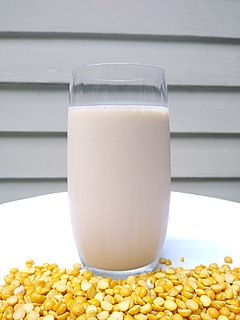 W
WPea milk is a type of plant milk made using pea protein, which is made of yellow peas. Commercial pea milk typically comes in sweetened, unsweetened, vanilla and chocolate flavours, and is usually enriched with vitamins. It is marketed as a more environmentally-friendly alternative to almond milk and a non-GMO alternative to soy milk. The two largest brands of pea milk are Ripple Foods and Bolthouse Farms. Pea milk is a plant-based alternative to dairy milk. It is available in several countries including the US, UK and Australia and is vegan, nut free and lactose free. Pea milk is a part of plant milks, which are gaining in popularity due to increased lactose intolerance among consumers and demand for environmentally sustainable products. The plant-based milk industry as per 2019 estimates is worth approximately US$5 billion and will reach a value of US$26 billion in 5 years. There has been research in the role of pea proteins in preparing infant formula, yoghurt and calf mixtures. The colour is off-white and pea milk is made through crushing yellow split peas and mixing the soluble components with water. Pea milk may also be prepared at home. It is perceived to be environmentally sustainable and requires less water than the production of dairy milk. There is limited information on the total carbon emissions and water consumption of producing ready to drink pea milk.
 W
WPlamil Foods Ltd is a British manufacturer of vegan food products. Founded in 1965, the company sells soy milk, horchata, egg-free mayonnaise, chocolate and carob bars.
 W
WPlant milk refers to manufactured, nondairy beverages made from a water-based plant extract for flavouring and aroma. Plant milks are vegan beverages consumed as plant-based alternatives to dairy milk, and often provide a creamy mouthfeel. For commerce, plant-based liquids are typically packaged in containers similar and competitive to those used for animal lactations, but cannot be labeled as "milk" within the European Union. In 2018, among the roughly 20 plants used to manufacture plant milk, almond, soy, and coconut were the highest-selling plant milks worldwide. The global plant milk market was estimated at US$16 billion in 2018.
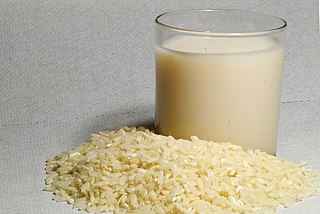 W
WRice milk is a plant milk made from rice. Commercial rice milk is typically manufactured using brown rice and brown rice syrup, and may be sweetened using sugar or sugar substitutes, and flavored by common ingredients, such as vanilla. It is commonly fortified with protein and micronutrients, such as vitamin B12, calcium, iron, or vitamin D.
 W
WUltra-high temperature processing (UHT), ultra-heat treatment, or ultra-pasteurization is a food processing technology that sterilizes liquid food by heating it above 135 °C (275 °F) – the temperature required to kill bacterial endospores – for 2 to 5 seconds. UHT is most commonly used in milk production, but the process is also used for fruit juices, cream, soy milk, yogurt, wine, soups, honey, and stews. UHT milk was first developed in the 1960s and became generally available for consumption in the 1970s.
 W
WWarm milk is milk that has been heated above room temperature. It is commonly used as a nightcap for children and people who abstain from alcohol. Its effectiveness as such is disputed.
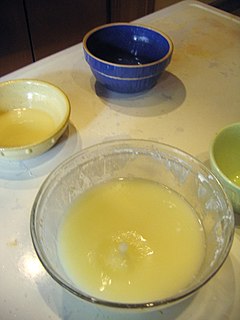 W
WWhey is the liquid remaining after milk has been curdled and strained. It is a byproduct of the manufacture of cheese or casein and has several commercial uses. Sweet whey is a byproduct resulting from the manufacture of rennet types of hard cheese, like cheddar or Swiss cheese. Acid whey is a byproduct brought out during the making of acid types of dairy products, such as cottage cheese or strained yogurt.
 W
WIn molecular biology, the Whey acidic proteins (WAP) have been identified as a major whey protein family in milk, and are important in regulating the proliferation of mammary epithelial cells. Additionally, their physiological function is thought to be similar to a protease inhibitor. It has been concluded, therefore, that WAP regulate the proliferation of mammary epithelial cells by preventing elastase-type serine proteases from carrying out laminin degradation and by suppressing the MAP kinase signal pathway in the cell cycle.
 W
WWorld Milk Day is an international day established by the Food and Agriculture Organization (FAO) of the United Nations to recognize the importance of milk as a global food. It has been observed on June 1 each year since 2001. The day is intended to provide an opportunity to bring attention to activities that are connected with the dairy sector.